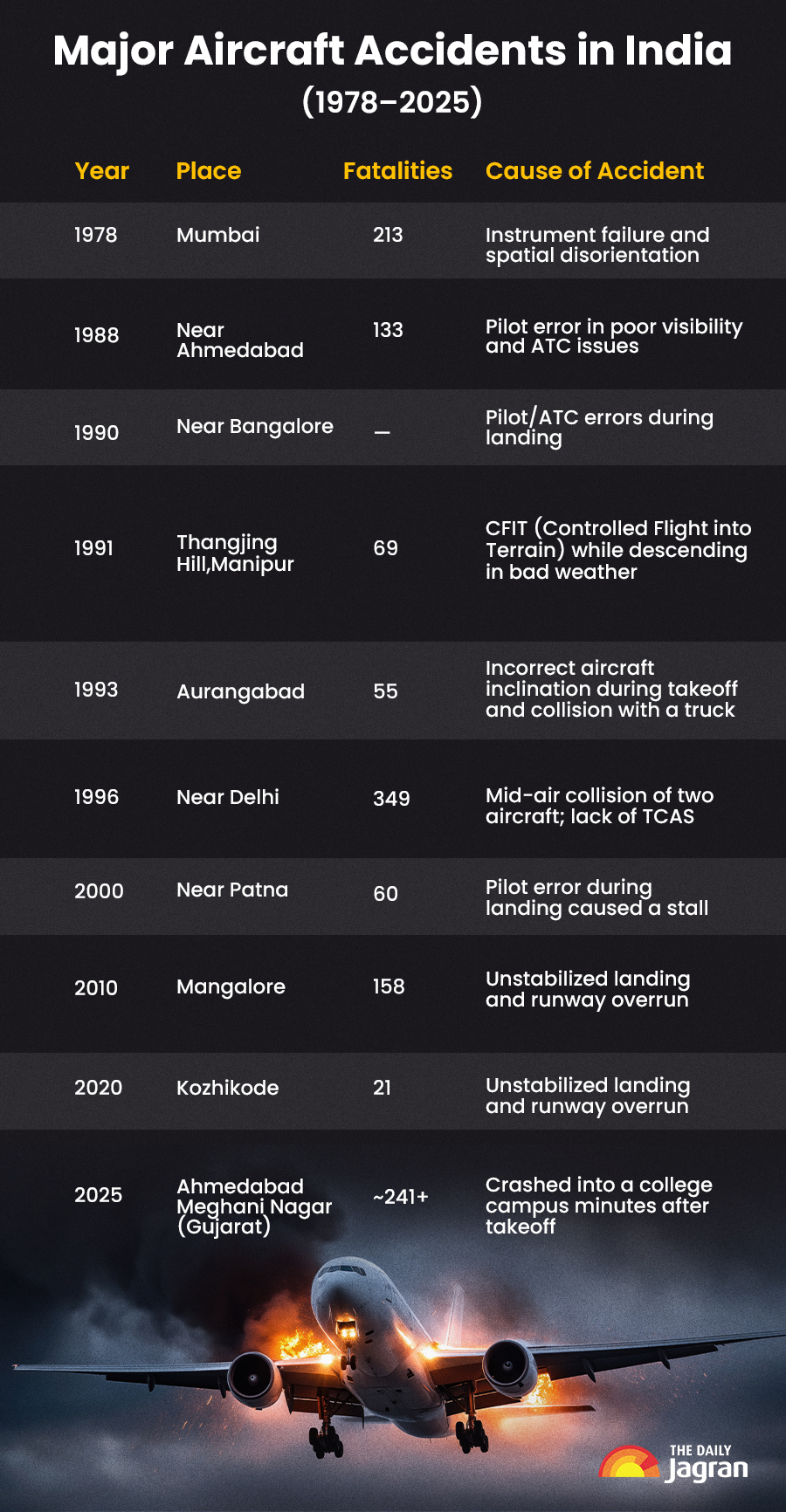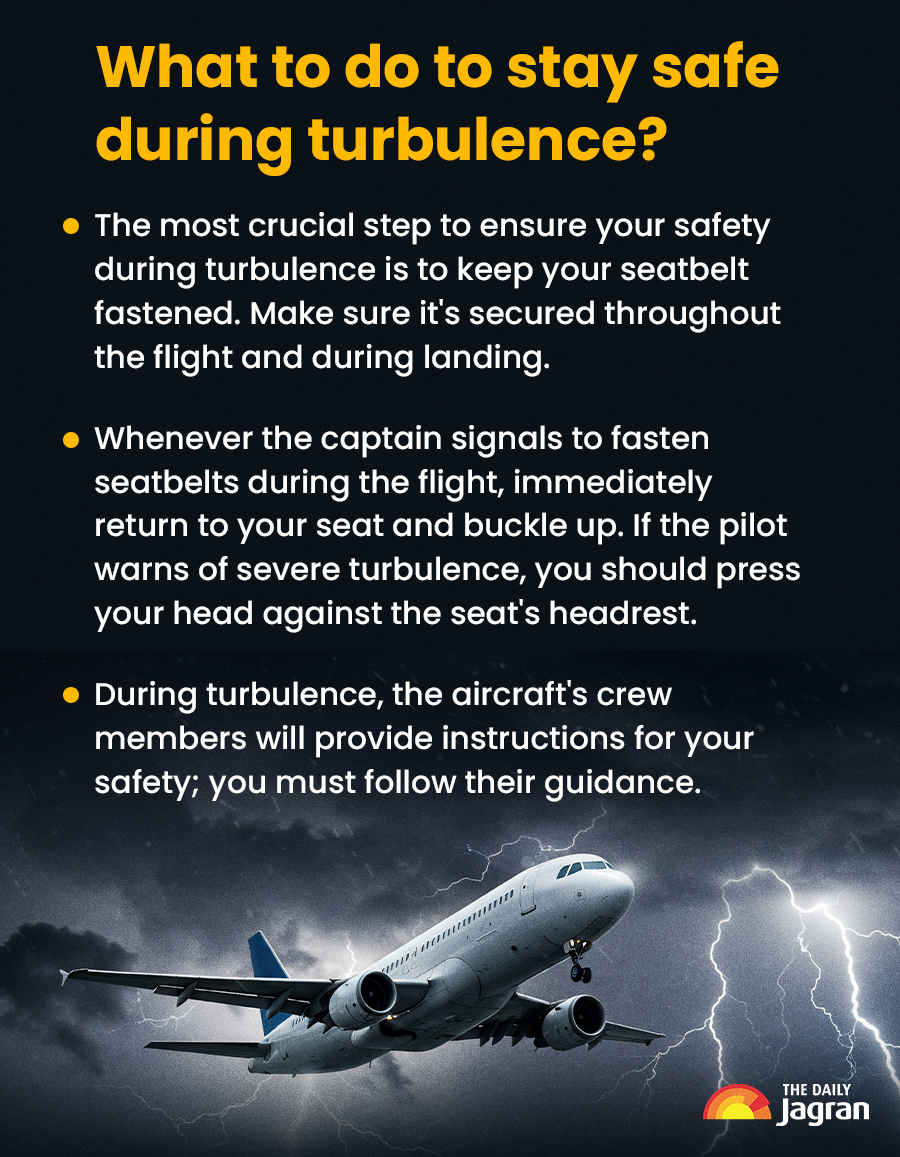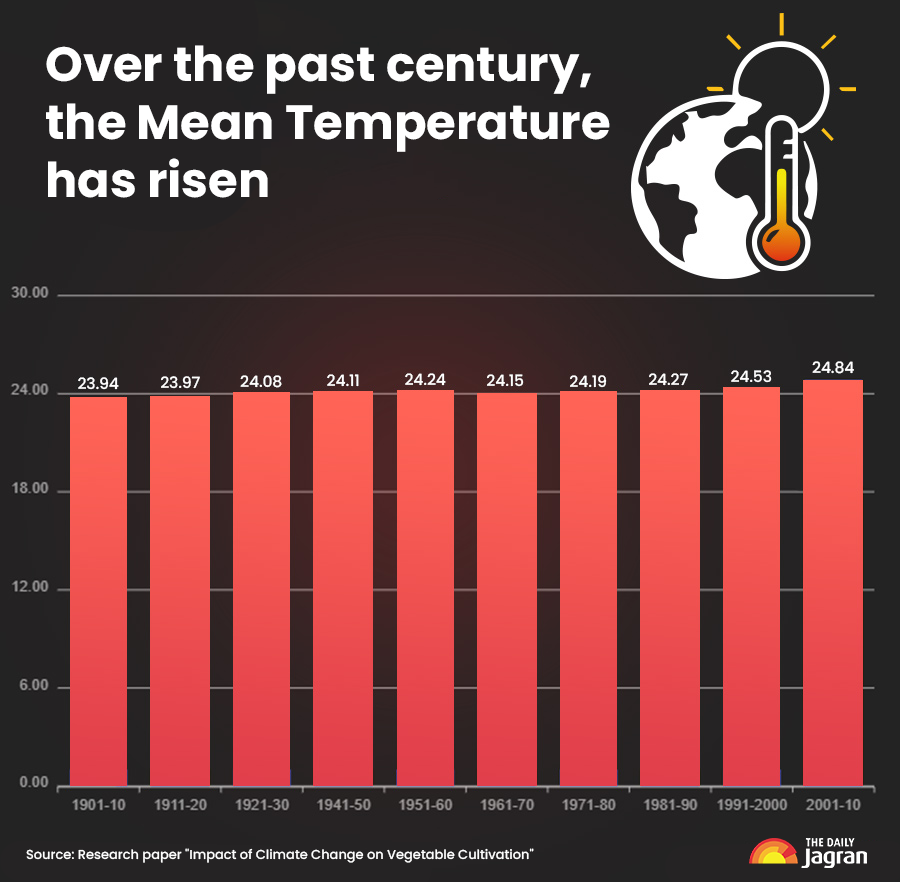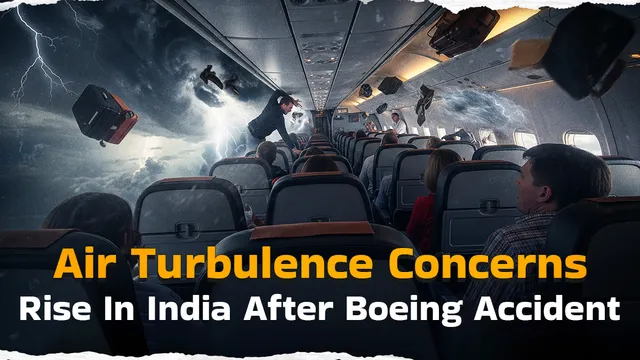- By Anurag Mishra
- Tue, 17 Jun 2025 06:11 PM (IST)
- Source:JND
The recent Boeing 787 Dreamliner accident has raised serious questions about global and Indian aviation safety. This accident, involving an aircraft previously considered safe, has reignited the debate surrounding Boeing's safety record, which was already under scrutiny after two fatal incidents involving the 737 Max.
In India, there has been a significant increase in turbulence incidents in aircraft recently. A recent domestic flight experienced severe air turbulence, leading to several passenger injuries and prompting an investigation by the DGCA (Directorate General of Civil Aviation). This incident has raised concerns about India's aviation preparedness and its capacity to handle meteorological instability.
Experts believe that the fierce competition for profits is leading to compromises in safety during aircraft manufacturing. Some specialists suggest this particular accident might have been caused by engine failure or faulty wiring. Flight technical data indicates a loss of power and failure of the flight control system immediately after takeoff. There have also been previous complaints of automated control faults reported on the Boeing Dreamliner.
Experts assert that these tragedies are not coincidental but rather point towards a disturbing pattern. Most accidents have occurred during the most critical phases of flight (takeoff or landing), exposing significant operational shortcomings. Several incidents took place on tabletop runways or in densely populated areas, further escalating the risks. They warn that this recurring issue could be fatal for India's rapidly expanding aviation sector. While the demand for air travel is surging, safety measures have not kept pace. The gap between ambition and infrastructure is now clearly evident.
Aviation expert Arvind Dubey states that norms in the aviation industry are extremely strict, whether it's inspecting the aircraft before flight or any maintenance work. However, the cause of the Ahmedabad accident will only be known after investigation. But all agencies associated with this industry must ensure once again that all standards are fully followed and there is no compromise on quality, whether it's maintenance or any other work.
Questions Have Been Raised About the Dreamliner
When the Boeing 787 Dreamliner was first introduced in 2011, it was hailed as a "flying miracle" – an aircraft synonymous with light weight design, high fuel efficiency, and superior passenger comfort. However, Boeing has faced several significant technical and management challenges over the past decade.
In 2018 and 2019, two major crashes involving the Boeing 737 MAX resulted in a total of 346 fatalities, leading to a worldwide grounding of that model.
Investigations revealed that the culprit was the MCAS software, a system about which pilots were not adequately informed. These incidents subsequently raised serious questions about Boeing's accountability, transparency, and ethics. The role of the US Federal Aviation Administration (FAA) also came under scrutiny, shaking confidence in global aviation safety standards.
Aviation expert Hrishikesh Mishra states that the cause of the Ahmedabad accident is currently unfathomable. He explains that if there were any issues with the aircraft, the pilot wouldn't have taken off in the first place, making the sudden paralysis of the aircraft perplexing.
Regarding the Dreamliner, he acknowledges that it's an excellent aircraft in terms of facilities, but points out that it has been involved in accidents in both Japan and Indonesia previously. The aircraft has repeatedly faced scrutiny, with some former Boeing engineers alleging quality flaws. In light of this, there's a clear need for regulatory agencies like the FAA, EASA and DGCA to adopt proactive monitoring.
Aviation and leadership consultant Anita Mendiratta stated that Air India and the Tata organisation are proud of their significant commitment to Boeing. Although Boeing has faced numerous challenges in recent years, particularly due to incidents involving the 737 MAX, Mendiratta noted that there's still a "hunger" among airlines globally to integrate the company's new aircraft into their fleets, especially after recent delivery delays.
Mendiratta states that the Dreamliner 787 is one of the most important aircraft in terms of sustainable aviation, emission reduction and cost management. The Aviation Safety Network database indicates that Boeing has faced numerous safety issues in the past, including several fatal accidents.
In response to the recent incident, Boeing has issued a statement saying it is working to gather more information. Air India has also stated that it is working to determine the causes of the accident and will provide all possible assistance to those affected.
In his recorded statement, Air India CEO Campbell Wilson said this is a very difficult day for all of us. Currently, all our focus is on the needs of the passengers, crew members and their families and loved ones.

Prices Lowered But Air Travel Convenience Remains Unchanged
According to the International Air Transport Association (IATA), air ticket prices have fallen by as much as 40 per cent over the last 25 years in real terms. However, the convenience of air travel has not improved. This is due to increasing airport congestion, flight delays and air traffic congestion. While passengers are now getting cheaper tickets, they are having to endure an inconvenient flight experience. The report emphasises the need for investment in airport infrastructure and better air traffic management.
Safety Buffer Line Weakened in Recent Years
Aviation safety expert and former pilot Shawn Pruchnicki believes that such accidents are not isolated incidents but rather part of a larger trend. Pruchnicki, an Assistant Professor at The Ohio State University's College of Engineering, states that the "safety buffer line" has weakened in recent years. He also referenced the two major Boeing 737 MAX crashes, which claimed 346 lives due to design flaws
He also warned that increasing air traffic congestion in controlled airspace poses a serious threat to safety. Concern arises when aircraft come within a few miles of each other. Pruchnicki also expressed worry about the severe shortage and immense pressure on air traffic controllers. These individuals bear the responsibility for thousands of lives but are facing extreme fatigue and stress.
The role of regulators like the FAA (Federal Aviation Administration), EASA (European Union Aviation Safety Agency), and India's DGCA (Directorate General of Civil Aviation) is central to aviation safety. These agencies are responsible for strictly monitoring the safety procedures of aviation companies and manufacturers.
Following the Boeing 737 MAX controversy, the FAA increased its stringency. However, experts believe that reactive measures (investigations after an accident) are more prevalent than proactive inspections (preventive checks). This means that investigations primarily occur after an accident, not before.
In India, the DGCA has initiated sector audits, random checks, and digital monitoring in recent years. However, given the rapid growth in domestic flights and the quick increase in air traffic, a comprehensive review of its operations and oversight is deemed necessary. The current pace of growth in air travel in India puts additional pressure on the DGCA to ensure that safety protocols and infrastructure keep up.
Need To Be Vigilant About Aircraft Maintenance
Mishra states that in India, we also need to be a bit more vigilant about aircraft maintenance. Today, various efforts are being made to reduce the cost of aircraft maintenance. In some cases, the cost of maintenance, which was there in 2001, has not increased to date, even though everything else has become more expensive. Aviation companies should consider how much risk they are taking to save a small amount of money.
What Does Data Say?
While the International Air Transport Association (IATA) reports that the five-year average fatality risk for the 2020-2024 period was 0.10, a notable decrease from 0.28 during 2011-2015. This means that if a person were to travel by air every day, it would still take them 15,000 years to experience a fatal accident.
According to the Aviation Safety Network in 2019, approximately one fatal accident occurs per 2 million flights. However, data from the Bureau of Aircraft Accident Archives indicates that the number of incidents and fatalities fluctuates annually. In 2019, there were 578 deaths across 125 incidents, while in 2020, there were 463 deaths in 90 incidents.
The 2024 IATA Safety Report shows that the fatality risk per million flights increased from 0.03 in 2023 to 0.06 in 2024. Although this figure remains below the average rate of the previous five years, this increase highlights the continued need for vigilance and improvement in aviation safety measures.
Impact of Covid, Severe Lack of Experience
Aviation expert Neil Hansford also attributed this crisis to the impact of the COVID-19 pandemic. He told news.com.au that pilot training halted during the two years of COVID and many experienced pilots retired or were furloughed.
Dr Rajee Olaganathan of Embry-Riddle Aeronautical University also noted in her research that after the COVID lockdowns in the summer of 2020, there was a nearly 50 per cent decline in pilots' skill proficiency. It was surprising to see such a significant drop in pilot skills in such a short period. In May 2020, global flights decreased by 70.6 per cent. In the United States alone, there were over 5.3 lakh fewer flights compared to May 2019.
What Is Turbulence?
Turbulence, or in-flight turbulence, is a condition caused by sudden changes in the pressure and speed of airflow, which makes the aircraft jolt and shake in the air during flight. Due to turbulence, the aircraft can experience anything from light bumps to sometimes very strong and prolonged jolts.

Turbulence Increased Due to Climate Change
While air turbulence due to bad weather might seem like a common occurrence, experts believe that climate change is causing an increase in turbulence incidents. The entire aviation industry is grappling with various challenges due to changing weather patterns and rising temperatures.
According to a study by researchers at the University of Reading in the UK, climate change will pose several challenges to flights in the future. After 2050, the incidence of air turbulence in North Indian airspace is likely to more than double.
According to the researchers, air turbulence events occur at very high altitudes and in clear air (without clouds), making them extremely difficult to predict in advance. The study suggests that in the coming years, air turbulence incidents will rapidly increase, especially in most parts of North India, between March and May, during the pre-monsoon season.
According to Professor Williams, who was part of this study, passengers might have to keep their seatbelts fastened for the entire duration of flights in the future. Researchers used climate model simulations to study the impact of climate change.
They state that while there can be many reasons for turbulence in an aircraft, clear-air turbulence (CAT) is particularly dangerous for aircraft because it cannot be seen by radar or satellite. Hot and fast winds, also known as jet streams, are the main cause of this type of turbulence. Jet streams have intensified due to climate change.
Aviation engineering expert Jayabrata Ghosh states that climate change has indeed impacted the aviation industry. Extreme weather events have rapidly increased due to climate change. Pilots are informed about the weather conditions along their route a few hours before flying and they operate the aircraft based on this information. However, sudden changes in weather during the flight increase the pilot's challenges.
In such situations, turbulence is often experienced, and sometimes flights are diverted due to extremely bad weather. This prevents the aircraft from reaching its designated airport on time, affecting the schedules of many other flights.
Furthermore, rising temperatures due to climate change make the air lighter. In extremely hot weather, aircraft require longer runways for takeoff. The plane has to accelerate over a greater distance to generate enough lift. However, many airports have shorter runways, making it very difficult to take off during hot weather.
Fuel prices are also crucial for airlines. In very hot weather, more fuel is consumed to cool the aircraft or when the plane has to accelerate over a longer distance on the runway. This makes aircraft operations much more challenging for airlines.
In summary, climate change and rising temperatures are creating various difficulties for the aviation sector.
Rising Temperatures Are Severely Impacting Flight Operations
Rising temperatures due to global warming are making it significantly difficult for aircraft to take off. Warm air is less dense than cold air. At ground level, warmer temperatures make it harder for an airplane to obtain sufficient lift for takeoff. In such conditions, the aircraft has to accelerate for a considerable distance on the runway in very hot weather. This makes it difficult for planes to take off from smaller airports. Even if a longer runway is available, the aircraft's fuel consumption increases.
Warmer temperatures can lead to weight restrictions for takeoff, meaning fewer passengers and reduced capacity for luggage, cargo and fuel. In some cases, aircraft may require longer runway distances to generate adequate lift.

Climate Change Increases Risk Of Lightning Strikes
The likelihood of severe thunderstorms is increasing in parts of the United States, particularly in the eastern region. A study estimates that lightning strikes could increase by 12 per cent annually in the US due to global warming. Lightning strikes can cause damage to electronic systems and equipment in large commercial aircraft.

Changing Jet Stream May Lengthen Travel
In recent decades, scientists have observed changes in the jet stream—fast-flowing currents of air in the atmosphere that move from west to east along the boundaries between warm and cold air. Research suggests that these changing wind patterns could impact travel times in the Northern Hemisphere, potentially making westbound flights longer while eastbound flights might become faster. These alterations could significantly affect route scheduling and fuel consumption for airlines.
Air Turbulence Will Increase
Due to jet streams, flights at high altitudes face strong wind gusts. Cases of this have increased in recent years. Jet streams are considered more dangerous because pilots cannot see them. They cannot be detected by radar or satellite.
The likelihood of clear-air turbulence (CAT) is higher during the winter months. A recent study found that between 1979 and 2020, incidents of air turbulence in the United States increased by 41 per cent. Climate change is considered to be the primary reason for this increase.
Increased Threat to Coastal Airports from Rising Storms
Global warming is causing sea levels to rise, leading to coastal flooding during both regular high tides and coastal storms. This makes it difficult for aircraft operations at airports located in coastal areas.
How Dangerous Is Turbulence?
Turbulence is a common occurrence during flights and is generally not dangerous. Modern aircraft are designed to withstand all types of turbulence with ease. Current aircraft also have sensors that detect turbulence in advance, allowing the pilot to warn passengers or even change the flight path depending on the situation. However, sometimes it can be so severe that luggage falls from overhead bins or passengers sustain injuries.
(This article was translated for The Daily Jagran by Akansha Pandey.)

